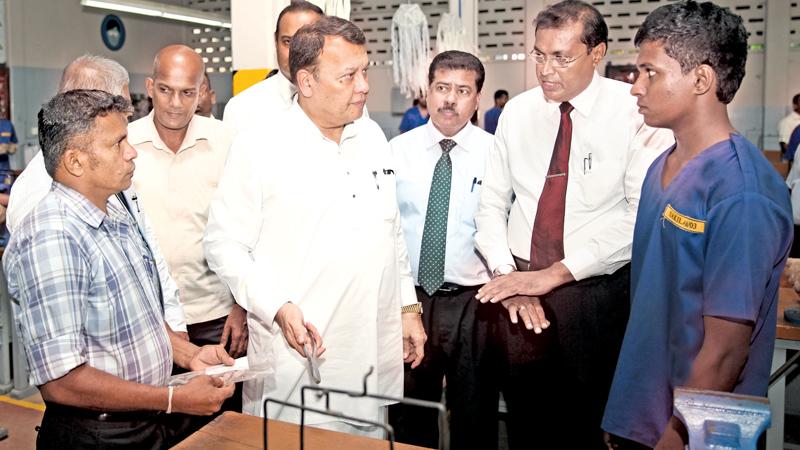
It is well-known that the construction industry experiences a severe dearth of skilled manpower in craft related occupations, such as, masonry, carpentry, bar bender and plumber. Similarly, it is difficult to attract a sufficient number of young people to training courses in construction trades.
There are many positive features in vocational training in the construction trade as compared to vocational training in other industry trades. It has a fairly high growth rate and hence, employment after training is assured.
Wages of construction craftsmen are much higher than most other craft occupations. It is possible to acquire the required competencies in a comparatively shorter time. For example, a young person could be trained to become an NVQ Level 3 mason within 6 months, but technical trade such as an Automobile Mechanic needs at least 12 months training for NVQ level 3.Construction craftsmen have foreign employments opportunities and a higher potential for self-employments as labour contractors and civil contractors.
Despite these positive features, the construction industry faces two major manpower related issues, namely, sufficient new entrants are not attracted to craft level occupations; and low performance standards of practising craftsmen,as a majority have not received a formal training. Due to numerous socio economic reasons, youth at the lowest social strata join the construction industry as manual labourers and helpers and acquire craft skills through on the job training, but, with skills gaps. Considering the importance of the industry, Technical and Vocational Education and Training (TVET) institutions have given prominence to training in construction trades as per the details given below:
All public sector TVET institutions have a capacity for training in construction trades
There had been a training of construction craftsmen( masonry) course in the first training centre established in 1893. All key craft level occupations of construction are integrated into the NVQ framework and the concept of terminal employment of construction craftsmen removed and qualification progression up to bachelor degree level facilitated. Award of NVQ through recognition of prior learning in the workplace was facilitated under NVQ framework.
Established and assisted many projects with incentives to trainees to fast train the construction craftsmen for Tsunami and post war rehabilitation works.
In spite of all these developments, TVET courses in construction trades suffer low enrolment and a high dropout rate. Therefore, training at public and private training centres has not been a successful model for training. To design an effective training program, it is necessary to understand the nature of the construction craftsmen and young people who choose careers as construction craftsmen. No school student thinks of choosing construction craftsman as a future career.
New entrants to these jobs are young people of middle age mostly from families of poor social strata. These people need money for their expenses, and join construction sites as helpers to earn an income immediately. A majority of construction craftsmen are not permanent employees of Construction companies.
They move with labour contractors and are paid on a daily basis or work quantity basis. They have a short term attachment to the construction site as well as the labour contractors. Considering the needs of young people who choose construction craftsmen jobs as their careers, the Ministry of Skills Development and Vocational Training and NAITA developed a workplace learning model to train masons, with technical and financial assistance of ILO, piloted by Maga Engineering Construction Company.
Maga Engineering implemented this program from June 3, 2015 to December 20, 2015 at the National School of Business Management (NSBM) at Homagama, with 220 trainees who worked as helpers in the sites.
It facilitated a good learning environment for the new entrants. Training plans and lesson plans were prepared and obtained TVEC accreditation at NVQ Level 3. Classroom sessions and practical work was conducted at the NSBM site of Maga Engineering. Although an advertisement was published calling for trainees, there was a very low response.
The International Labour Organization (ILO) assisted the piloting of this model by providing funds for instructor payment, career guidance and training on soft skills, such as, health, safety and hygiene and English. Of the 200 helpers enrolled for training, 120 completed the course and 95 were successful at NVQ Level 3 certificates.
This program is a Learning while Earning Project. It is more than workplace learning as relevant theory and basic practical knowledge were provided at the site itself. Check, www.crossrail.co.uk website.
Maga Engineering has started their second workplace training program in their Green Building Project at Rajagiriya. The Ministry of Skills Development and Vocational Training is exploring the possibility of broadbasing workplace training.
The writer is a Program Reform Specialist at the Ministry of Skills Development and Vocational Training.
